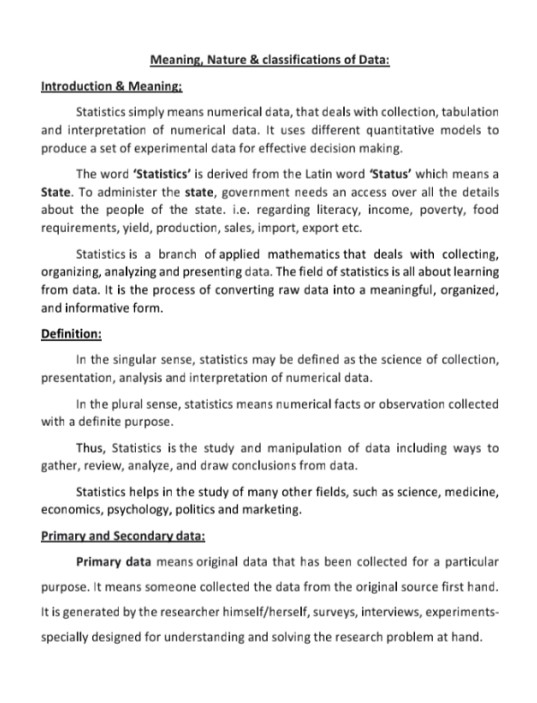Introduction to Statistics and Data Classification
Summary:
This note provides information about Statistics, including the meaning, nature, and classifications of data. The note also covers the concept of range and quartile deviation, along with their merits and limitations. The note concludes with an explanation of mean deviation for individual and discrete series.
Excerpt:
Introduction to Statistics and Data Classification
Meaning, Nature & classifications of Data:
Introduction & Meaning;
Statistics simply means numerical data, that deals with the collection, tabulation, and interpretation of numerical data. It uses different quantitative models to produce a set of experimental data for effective decision-making.
The word ‘Statistics’ is derived from the Latin word ‘Status’ which means a State. To administer the state, the government needs access to all the details about the people of the state. i.e. regarding literacy, income, poverty, food requirements, yield, production, sales, import, export, etc.
Statistics is a branch of applied mathematics that deals with collecting, organizing, analyzing, and presenting data. The field of statistics is all about learning from data. It is the process of converting raw data into a meaningful, organized, and informative form.
Definition:
In the singular sense, statistics may be defined as the science of collection, presentation, analysis, and interpretation of numerical data.
In the plural sense, statistics means numerical facts or observations collected with a definite purpose.
Thus, Statistics is the study and manipulation of data including ways to gather, review, analyze, and draw conclusions from data.
Statistics helps in the study of many other fields, such as science, medicine, economics, psychology, politics, and marketing.
Primary and Secondary data:
Primary data means original data that has been collected for a particular purpose. It means someone collected the data from the original source firsthand. It is generated by the researcher himself/herself, surveys, interviews, and experiments-specially designed for understanding and solving the research problem at hand.


Reviews